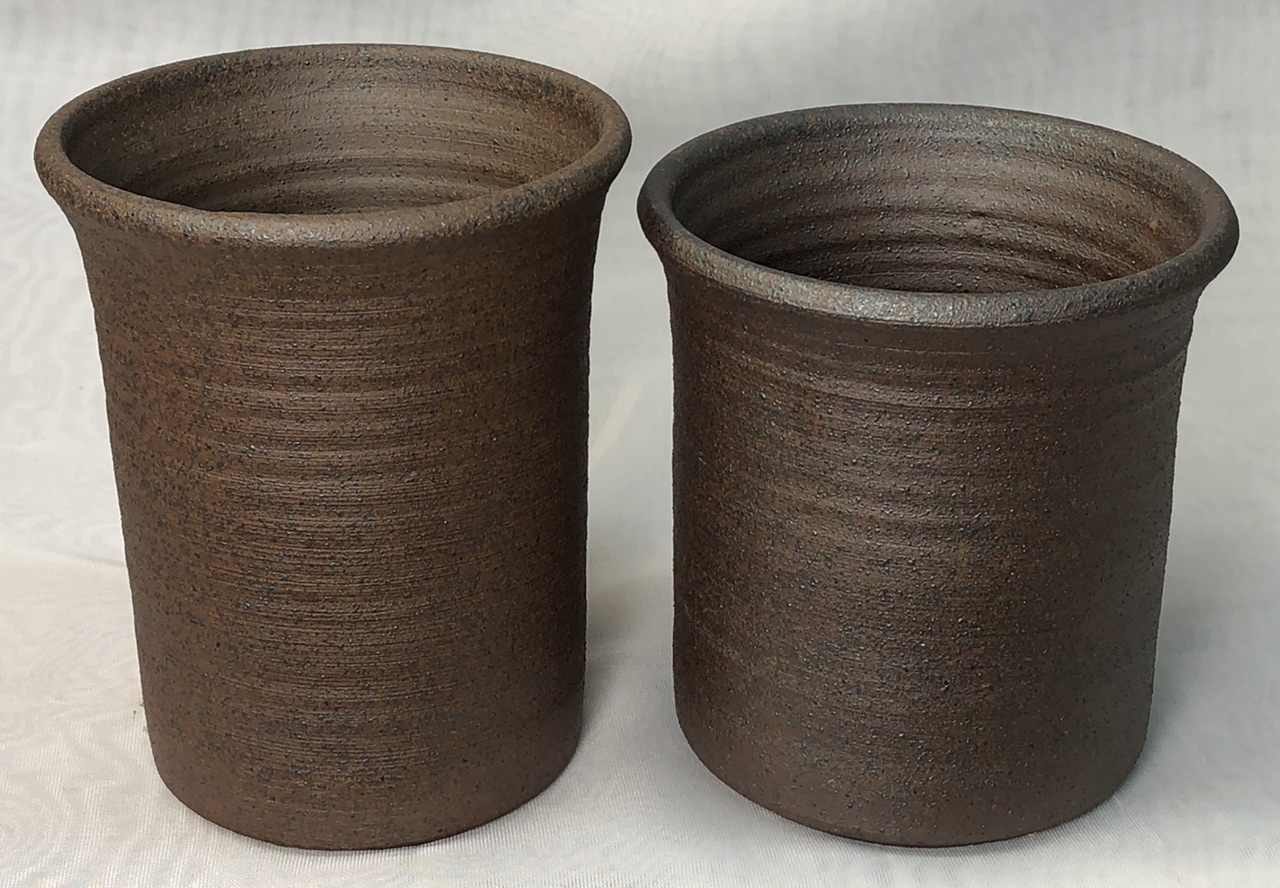| Monthly Tech-Tip | No tracking! No ads! |
Blue brick is made by reduction-firing high-iron clays to near vitrification
A google search for "Staffordshire blue brick" will turn up lots of images and web pages on the topic. Although not really appearing blue on closeup, at a distance the effect is more clear. The clay must have enough iron to both stain it and act as a flux in the reduction kiln atmosphere. The degree of atmospheric consistency inside the kiln will determine the range of colors produced. A potter can achieve this effect by firing a red earthenware in reduction (e.g. to cone 2R), firing a middle-temperature red burning body to cone 6R or adding feldspar to a high temperature reduction red. Additions of iron oxide will enhance the effect, however, thorough testing is needed to achieve the difficult balance of enough iron to get the color but not so much it will over-vitrify and bloat or melt.
Related Pictures
Amazing iron-blossoms in a vitreous reduction stoneware body

This picture has its own page with more detail, click here to see it.
Fire-Red is an unusual material for several reasons. It has a high iron content yet is a fireclay. It is also non-plastic. Most important, it is not ground to 200 mesh like industrial materials. These bodies demonstrate it well, left: 42.5% Fire-Red, 42.5% ball clay and 15% Custer feldspar, right: 60% Fire-Red, 30% ball clay and 10% feldspar. The ball clay adds plasticity. The feldspar gives control of the degree of vitrification (the left one has 1.3% porosity at cone 10R, the right one 1.5%). This recipe vitrifies so it does not exhibit the deep red color that Fire-Red would give if there was no feldspar. Look closely at the surface: It is covered by thousands of tiny iron-eruptions, they occurred as the iron pyrite particles liquify as FeO (because of the reduction atmosphere in the firing), and these produce a metallic appearance. And, they will bleed through an over-glaze, if present, to give stunning speckled surfaces.
Videos
Links
| Glossary |
Reduction Firing
A method of firing stoneware where the kiln air intakes and burners are set to restrict or eliminate oxygen in the kiln such that metallic oxides convert to their reduced metallic state. |
| Glossary |
Brick Making
Brick-making is surprisingly demanding. Materials blending and processing, forming, drying and firing heavy and thick objects as fast as possible are like no other ceramic manufacturing challenge. |
Got a Question?
Buy me a coffee and we can talk

https://digitalfire.com, All Rights Reserved
Privacy Policy

